“Do you want fries with that?”
It may not be the best line you hear every time you visit a fast-food joint, but it’s certainly the most effective one.
Because every time you hear this and say yes, you’re adding 15-40% to their annual revenue.
But wait, what’s happening here?
It’s cross-selling, my friend.
You may have wanted only the burger but ended up buying fries and a drink too. You’re cross-sold.
And you’ve seen the benefit. Cross-selling increases the average order value.
If you’re in an e-commerce business or any business that sells, you’re at the right place. Because in this article, we’re going to discuss proven cross-selling strategies to increase your sales.
What is cross-selling?
By definition, cross-selling is selling a different product or service to an existing customer. That is, you recommend products or services to your existing customers that will complement or expand the products or services they already have.
Look at the travel industry, for instance. The travel company may sell you a flight ticket from Boulder to Chicago – that’s the original sale. Cross-sell occurs when they sell you a vehicle rental for when you land, a room in a hotel to stay in, and a guided tour of a nearby city.
None of these things are required for the first sale – the plane ticket – nor do they improve the service provided with the flight. You could quite happily take the flight and find your own vehicle to hire, a hotel room, and so on. But in this case, the cross-sell is all about convenience.
Let’s look at some more examples.
Cross-selling examples
Cross-selling techniques can be applied to almost all products across all industries. For example,
You have bought auto insurance from a firm that provides more insurance services. Most probably, you’ll be pitched health and term insurance too. That’s an example of cross-selling in insurance.
Now let’s see how cross-selling happens in financial services. When you open a bank account, you may be asked to open a Demat or Trading account as well.
We’ve already seen an example of cross-selling in the travel sector. Along the same lines, the hospitality sector cross-sells tours and experiences to its customers.
If you think cross-selling requires a salesperson to influence you, you’re wrong. For instance, e-commerce. You must have come across the “customers also bought” section when you shop on Amazon. That’s their subtle way of cross-selling.
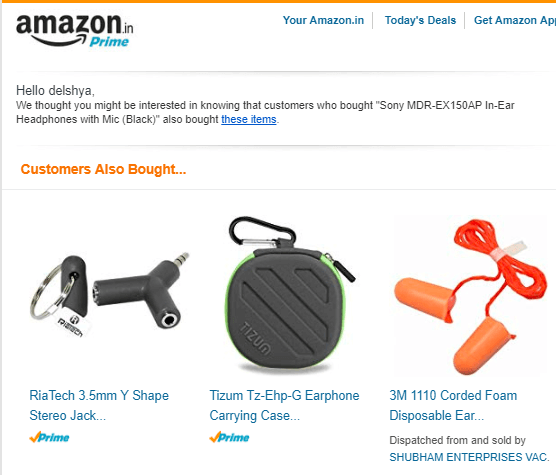
We’ve talked a bit about the topic. But, there’s one more term people use together with cross-selling. That’s upselling. However, the two are very different. Let’s look at it closely.
The difference between cross-selling and upselling
Byheart this:
- Cross-selling is selling additional (or non-related) products. E.g., selling fries with a burger
- Upselling is selling the improved (or higher) version of the same product. E.g., selling extra cheese with a burger
Cross-selling and upselling bring different impact to the business. And that’s why they should be used strategically. Below are some more differences you’ll note—from business strategy point of view.
| Cross-selling | Upselling | |
| Purpose | Add to the original offer | Improve the original offer |
| Pricing | Can be independent of the price of the original product | The most desirable price-point is less than half the cost of the original product or service |
| Buying cycle | Can be the entirely new sale | It’s not the new sale. Point of sale is the best time to introduce add-ons. |
| Drawbacks | Too many choices can overwhelm the buyer | Customers may not be willing to upgrade if their purpose is served by the cheaper or lower-tier alternative |
| Suitable for | B2C, e-commerce, but rarely B2B | B2C and even B2B |
Benefits of cross-selling
Needless to say, the more products you sell, the more profits you add to your wallet. Here are some more benefits of cross-selling.
- Increase your average order value
- Introduce customers to new products and increase the market for those products
- Increase your profit margins
- Give visibility to not-so-popular or slow-moving products
- Indirectly, increase retention, as your customers can find more products of their choice with your brand.
While discussing the benefits of cross-selling, it would be unjust if we don’t highlight the potential disadvantages of it. Let’s look at them.
Disadvantages of cross-selling and remedy
According to HBR, Cross-selling is profitable in the aggregate. But one in five cross-buying customers is unprofitable—and together this group accounts for 70% of a company’s “customer loss.”
Anything and everything that’s unregulated can cause more harm than good. But it’s important to know the root cause and remedy that. Here, we’ll look at the reasons or circumstances when cross-selling can be disastrous for your business.
- Too many choices can overwhelm the buyer. It may even lead to the buyer not purchasing at all. Such instances happen generally when customers are given choices unrelated to what they intend to buy in the first place.
- Sometimes, it is difficult to convince buyers to add another high-dollar purchase to the existing sale. It generally happens when the customer is new or isn’t satisfied with their past purchases with your brand.
- The original product may look inferior to other products you intend to suggest.
- The chances of rejections are more when cross-selling face-to-face. Without great incentives, salespeople are less likely to try cross-selling.
- Being pushy can turn off customers.
As a preventive measure, sales training for cross-selling is essential. Along with this, brands can employ incentive schemes like SPIFF to motivate account managers to cross-sell to their clients. Some brands use tools like opportunity management CRM to identify cross-sell opportunities from existing clients and pitch them when the time is right.
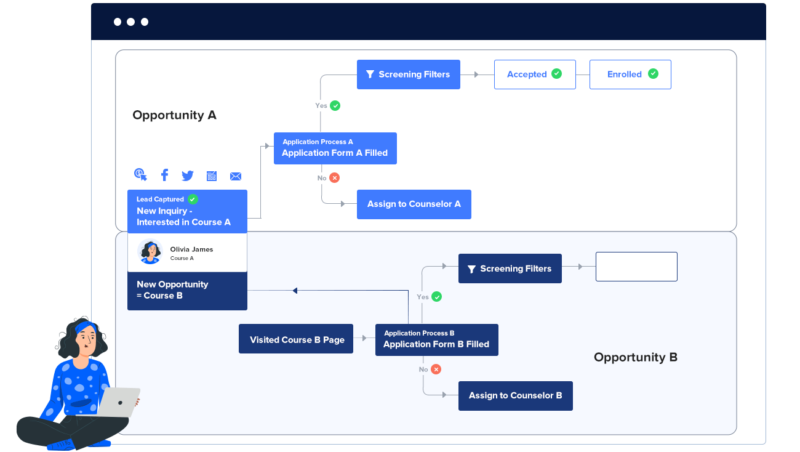
5 Steps to build your cross-selling strategy
Your cross-selling strategy should cover:
- Understanding your customers and their needs
- Developing cross-selling techniques
- Identifying opportunities
- Figuring out the right time to cross-sell
- Tracking metrics and analyzing results
1. Understand your customers and their needs
When you know your customers well, you can suggest products they might need.
When you start preparing your cross-selling strategy,
- Identify the most profitable customer segments.
- Understand how your customers’ behaviors and preferences have changed over time
- Know the products and channels they use. Fetch the channel-wise sales data as well (you can use sales CRM software for this)
- Segment your customers basis demographic and socio-economic information.
2. Develop cross-selling techniques
If you want to make your cross-selling strategy easily adaptable, follow these rules:
- Your cross-sale product should complement the original item
- It is less expensive than the original product
- It should be a no-brainer. That is, you shouldn’t have to explain the product.
Note, cross-selling applies to both—online and in-person sales.
Here are some tried and tested cross-selling techniques from leading brands.
#1 Product recommendations based on past purchases
This is probably one of the most common and easiest ways to send purchase recommendations to your customers. Take note of how their purchase history has been, what their interests are, or even where they spend the most money. Using this information, you can send product recommendations.
Amazon does an amazing job of this. They send emails, app notifications and even in-app product listings similar to what you have purchased before.

#2 Offer discounts and free-shipping
Ah, the trick that I, and many more, fall prey to. When you see those posters or ads that say buy 3 for $199, you convince yourself, you need 3 shirts when all you needed was one. This one has high success rates where people tend to buy more products than they wanted to.
Another way this is done is through shipping charges. You place a bar on free-shipping. That is, orders above $X qualify for free-shipping. People tend to add more items to their carts just to escape shipping charges.
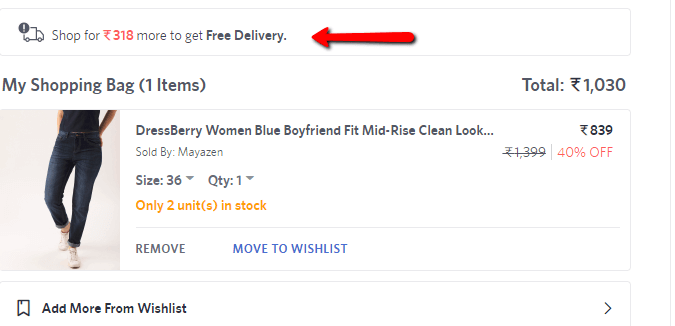
#3 Cross-sell based on similar interests
There is this very clever line that many businesses use: “Other users also bought…”. This creates a very natural human curiosity as to what other people are buying and you may very well end up buying some more.
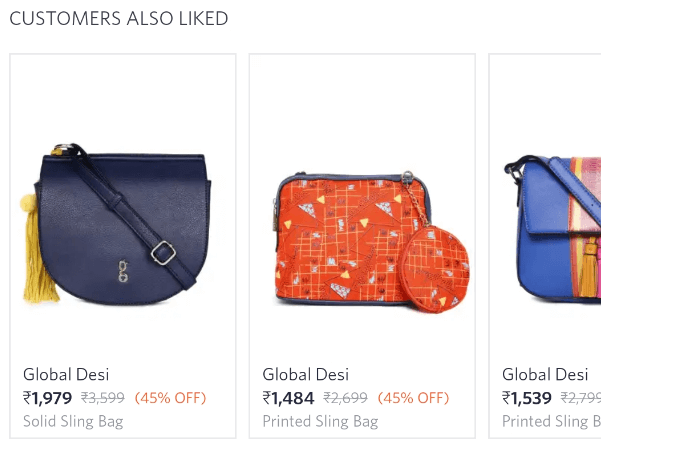
#4 Force sell something
Not recommended for every product, but still, you can try this for products or services of lower ticket size.
Here’s an example of redBus. There are two ways that they cross-sell. When you book a bus, they ask you to insure your journey. Most people automatically click on this option. So, there, they’ve sold insurance along with their service.
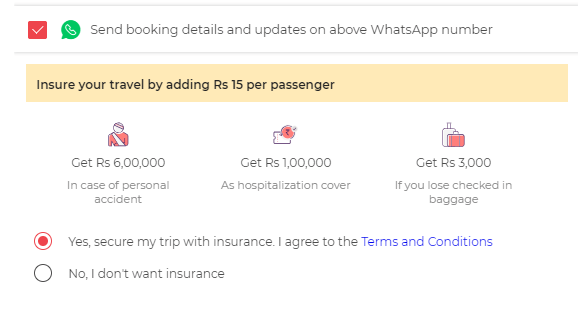
Also, once you book tickets, RedBus sends you a selection of hotels at your destination to choose from. Since, in all likelihood, you would need accommodation in the place you are visiting, you would look at their options. See what they did there? Fool-proof cross-selling!
#5 Bundle products
If someone buys just one part of a package, you can try and convince them or incentivize them to buy the whole package together. You can propose options like “Shop the look” if you’re an apparel brand. Or you can offer packages at a cost slightly lower than the cost of all individual items.
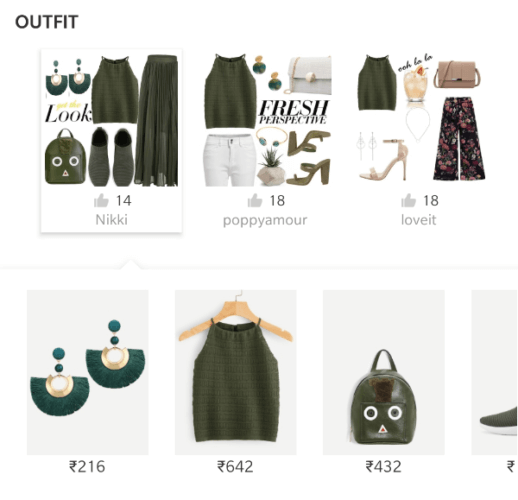
#6 Offer loyalty rewards
A very common way to do this is through adding points or e-cash into their ‘wallets’. A lot of businesses follow this pattern, the most popular of which is provided by airlines, where you can accumulate flyer ‘miles’ that you can use later to earn free flights. This encourages your customer to keep flying with your airline to earn that free flight!
Even better, by putting an expiry date on these loyalty points, you can urge your customer to make purchases quicker. Like the way, Bewakoof is doing in the example below.
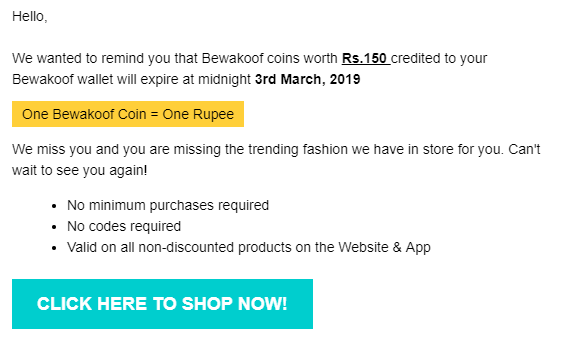
#7 Cross-sell supplementary services
When you purchase products that require constant maintenance like electronics or vehicles, you can sell them a discount on their yearly check. This will allow the customer to come back to you if something goes wrong instead of trying to get it fixed for cheap.
As long as you have more than one product to offer, there’s no reason why cross-selling strategies won’t work for you.
In the finance industry, if you provide loans or mortgages, make sure to offer the inclusion of life or buildings insurance – or both!
In the healthcare industry, why not offer a physical exam as an add-on to other services? Take it further and you can cross-sell spa days and massages too.
With a little creativity, you should be able to easily identify potential cross-selling opportunities. The next section gives you some ideas on identifying cross-selling opportunities.
3. Identify opportunities
You’ll know there’s an opportunity to cross-sell when:
- A customer indicates an interest in your products
- When you know there’s a need
For 1, you can track your customers’ interactions with your brand assets like ads, social media posts, website visits, inbound inquiries through chats, phone calls, etc. All you need to have is an efficient lead tracking system that keeps an eye on your customers’ activities. You can also use lead management software, for that matter.
I’ll tell you another way to identify cross-sell opportunities. If you use a CRM software, you must be capturing customer data. Now, use data filter option in your CRM to identify clients with cross-sell or bundling opportunities. You already know which products can be bundled together for maximum closure chances – you or your agents can create these lists and send them to the auto-dialer for quick calls.
For 2, keeping in touch with customers and sharing regular product updates with them could help.
At times, clients do not have a strategy. But since we’ve been in the industry for a long time, we know the ins and outs, and using this experience, we help them build a strategy and not just sell a product.”
Arbaz Jawed, Manager – Inside Sales, LeadSquared
4. Figure out the right time to cross-sell
Timing is important when it comes to cross-selling.
For some queries such as “work from home look,” showing all products—from jewelry to shoes—in the very beginning makes sense.
However, for specific queries such as “engagement rings,” you can cross-sell only in the advanced stages of the buyer’s journey.
One common technique brands use is remarketing. You track your customers’ online behavior and show relevant ads to them (behavioral targeting). The downside of this technique is that many people think it is obtrusive. Especially when you bombard users with ads when they’re just in the exploration phase. It does nothing but builds a negative perception of your brand.
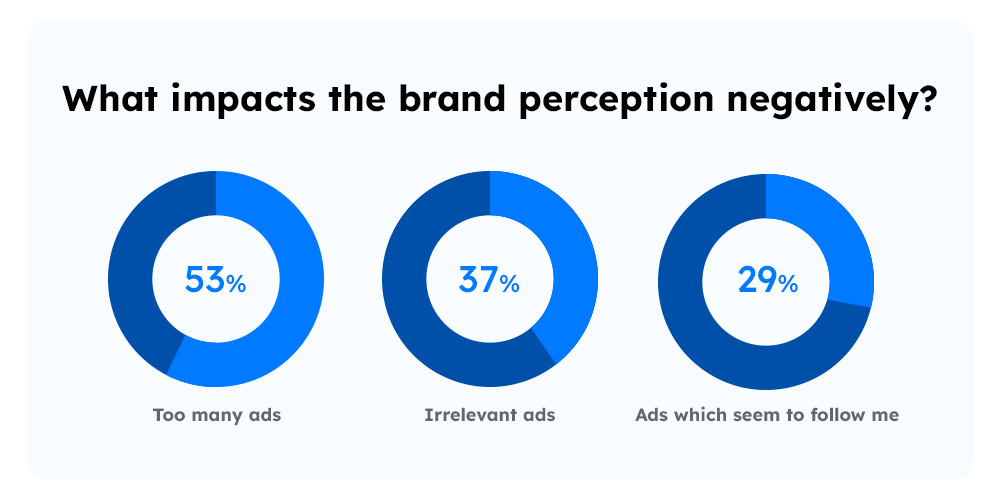
So, to answer your question – when the best time is to cross-sell, sell when it makes sense. Also, do not wait for implementing a process or tool before you start cross-selling. Just get started; apply a test-and-learn approach. Prepare a list of dos and don’ts according to your clientele.
5. Track metrics and analyze results
Opportunity Management CRMs are designed to track up-sell and cross-sell numbers. However, even if you don’t have the tool, you should be able to understand whether your cross-selling efforts are paying off or not. You can get an idea through the following metrics:
- Increase in average sales volume per customer.
- Increase in CLV
Tracking and analyzing cross-sales will help you forecast sales and growth.
In conclusion
Cross-selling benefits both—customers and your brand. The benefits for the customer are partially the provision of these extra services (which give benefits in and of themselves) as well as being able to obtain products and services from their trusted and preferred supplier – that’s you.
They will be happy that you can provide a complete solution for them, and whether they take the option of the cross-sold package every time is not as important as knowing it exists. Their trust in you will increase leading them to become happier customers overall.
For businesses, the increase in customer trust is a clear benefit, but the major reason for cross-selling is to increase your bottom line. Once a customer has decided to purchase from you, getting them to buy extras or purchase for a second time is much easier than finding a new customer.
This also means that the more a customer buys from you, the more likely they are to want to buy more from you now and in the future. This brings a greater number of sales, and therefore a greater profit, all without the monetary and time costs associated with attracting new customers.
If you are looking for a tool that can help you implement your cross-selling strategies, then look no further. LeadSquared comes with detailed customer tracking and smart notifications. Give it a quick try, why don’t you?
FAQs
What is cross-selling in sales?
Cross-selling is a way of selling related, supplementary products or services based on the customer’s interest or past purchase. It helps in increasing the CLV (customer lifetime value) and increase business revenues.
What are cross-selling and upselling?
Upselling involves encouraging customers to purchase a comparable higher-end product. While cross-selling invites customers to buy related or complementary items.
What are the benefits of cross-selling?
The visible benefits of cross-selling include an increase in the average cart value. Other than this, cross-selling can improve customer retention and increase CLV as customers get what they need from their favorite brand.












